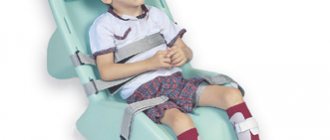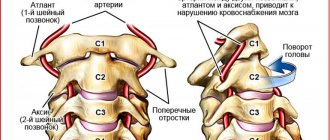Home » Department of Neurology » Diseases » Minor chorea
Minor chorea is a disease of rheumatic etiology, characterized by movement disorders.
Damage to the body by the rheumatic process begins with the penetration of group A hemolytic streptococcus bacteria into the body. This microbe from foci of infection (for example, in chronic tonsillitis from the palatine tonsils) penetrates the bloodstream and spreads in various tissues. The pathogenesis of rheumatic lesions is based on connective tissue pathology. Damage to heart valves and joints may develop. Penetration of the pathogen into the central nervous system can provoke dysfunction of the cerebral cortex, cerebellum, and basal ganglia (neurorheumatism). Large and small vessels of the brain are damaged with the development of vasculitis and thrombusculitis. As a result of the development of degenerative processes, coordination of movements and muscle tone are disrupted in these areas of the nervous system.
After the discovery of antibiotics, the incidence of chorea minor is up to 10% of all neurological diseases. The disease develops more often in girls than in boys, and mainly in the autumn-winter period. The duration of the disease is from 3 to 6 weeks. Short-term relapses may occur over a long period of time after the height of the disease (for example, during pregnancy). In rare cases, deaths have occurred due to pathological effects on the cardiovascular system.
Lesser chorea - Types
Depending on the clinical course, the following are distinguished:
- Classic version of the course of minor chorea
- An atypical variant of the course of chorea: erased, low-symptomatic, sluggish form of the disease
- paralytic minor chorea
- pseudohysterical minor chorea
The course of the disease can be:
- Latent (hidden)
- Subacute
- Acute
- Recurrent
Complications and prognosis
The prognosis for treatment of chorea largely depends on its type. Sydenham's chorea proceeds most favorably. The acute period of the disease most often covers a time period of about twelve weeks, after which the severity of symptoms subsides. The entire period of rheumatic chorea can last for a year, and in rare cases lasts longer.
Chorea of pregnancy is a special form of the disease, the course of which is greatly influenced by hormonal levels. The most unpleasant circumstance is the appearance of a striking set of signs of pathology - the so-called choreic storm. In this case, it is necessary to decide on terminating the pregnancy to save the life of the mother.
Hormonal changes during pregnancy can provoke severe chorea
Senile chorea is a naturally progressive disease. However, in this case, the pathology can last quite a long time. Huntington's chorea has a poor prognosis in all cases. Death occurs after ten to fifteen years from the onset of the disease.
Minor chorea - Causes
Among the reasons for the development of chorea minor and the risk factors for this pathological process are the following:
- Hereditary predisposition
- Female
- Rheumatism
- Age from 6 to 15 years
- Previous streptococcal infection (for example, sore throat)
- Asthenic physique
- Psychological trauma
- Increased excitability of the child's nervous system
- Frequent sore throats
- Chronic tonsillitis
- Respiratory diseases
- Rheumatism
- Decreased immunity
- Carious teeth
General symptoms
With chorea, several muscle groups can contract simultaneously: uncontrolled convulsive movements of the arms, legs, and other parts of the body occur. This disease is characterized by the destruction of nerve cells - this leads to serious consequences caused by dysfunction of the nervous system and brain.
Regardless of what type of disorder occurs, a number of main symptoms can be identified, the manifestation of which will help to consult a doctor in time and diagnose the disease. Symptoms characteristic of all types of chorea:
- a person’s movements become involuntary – one of the very first and most important symptoms;
- the head is jerked;
- muscle tone throughout the body decreases;
- movements become uncoordinated;
- the person grimaces unconsciously;
- increased gestures;
- when writing text, a change in handwriting is noted;
- deterioration of memory and, in some cases, intelligence;
- during rest and sleep, hyperkinesis disappears;
- the gait becomes dancing;
- body temperature is increased;
- the patient cannot control his movements.
It is difficult for the patient to perform even the simplest actions: walking, standing, moving the limbs.
Despite the fact that muscle tone is reduced, reflex actions remain. The patient's movements become impulsive and chaotic, facial expressions are disrupted, which creates the impression of antics. The more the disease progresses, the more pronounced and uncontrollable disturbances in movements and facial expressions occur.
At the initial stage, the patient has the ability to control movements, so to prevent the disease from progressing, treatment must be started immediately.
Without therapy, a patient in the later stages of the disease completely loses the ability to make normal movements, he changes and becomes a different person. Patients with chorea become hot-tempered, moody, nervous and irritable.
Often a split personality like schizophrenia occurs, and unrealistic and delusional thoughts may occur. Against the background of all this, dementia can progress.
More often than others, Henington's chorea, as well as minor chorea or Sydenham's, are diagnosed.
Lesser chorea - Symptoms
The development of minor chorea is accompanied by the following clinical signs:
- Twitching of arms and legs (trochaic hyperkinesis) on one side or symmetrical
- Twitching of facial muscles (grimacing, blinking, twitching of the corner of the mouth, wrinkling of the forehead)
- Muscle weakness
- Gait disturbance
- Shoulder Jerking
- Movement coordination disorder
- Head twitching
- Handwriting disorder
- Sleep disorders
- Seizures
- Speech impairment (lingual hyperkinesis)
- Difficulty swallowing (hyperkinesis of the laryngeal muscles)
- Intermittent breathing (diaphragmatic hyperkinesis)
- Emotional excitability
- Memory and attention disorders
- Increased fatigue, irritability
- Psychoses with auditory and visual hallucinations
Signs of chorea
All types of chorea have one common feature - the appearance of violent movements in the skeletal muscles. The remaining symptoms differ somewhat in the minor, senile varieties and Huntington's chorea.
The British say that a child with chorea has to be punished three times before a diagnosis can be made: once for being restless, once for breaking dishes, and a third for making faces at his grandmother.
A. S. Nikiforov, A. N. Konovalov, E. I. Gusev
Clinical Neurology 2002
Signs of chorea - photo gallery
Chorea most often affects the facial muscles
With all types of chorea, gait changes
Huntington's chorea is a progressive disease
Symptoms of various forms of chorea - table
| A type of chorea | Minor chorea (Sydenham's chorea) | Chorea of pregnancy | Huntington's chorea | Senile chorea |
| Symptoms of damage to the basal ganglia | ||||
| Changes in gait and voluntary movements of the arms and legs |
|
|
| |
| Changes in facial expressions and speech |
|
|
| |
| Changes in the nature of muscle tension (tone) in a calm state | muscle tone is reduced | stiffness when moving the trunk and limbs | muscle tone is reduced | |
| Mental and emotional disorders |
|
| not typical | |
Lesser chorea - Diagnosis in Israel
Diagnosis of minor chorea begins with collecting an anamnesis of the patient’s life and illness. The diagnosis is confirmed by a characteristic clinical picture in combination with certain research methods:
- Blood test - allows you to identify the content of markers of streptococcal infection in the body: antisteptolysin-O, rheumatoid factor, cyclic citrullinated peptide, C-reactive protein.
- Electromyography is a method that allows you to study the biopotentials of skeletal muscles. When recording the electrical activity of muscles during chorea minor, an elongation of potentials and asynchrony in their appearance are revealed.
- Electroencephalogram - reveals diffuse slow-wave bioelectrical activity of the brain.
- Computed tomography, magnetic resonance imaging, positron emission tomography help identify focal changes in the brain.
Symptoms of pathology
Modern medicine has identified two main forms of the disease:
- classic Huntington's chorea - progression begins after 40 years, the clinical picture is characterized by decreased muscle tone and excessive movements;
- juvenile form - manifests itself in childhood, accounting for 10% of all cases of the disease.
The development of the disease is rapid, but gradual. Symptoms of minor chorea in children:
- smacking your lips while talking;
- frequent and deep sighs;
- constant sniffing;
- spontaneous protrusion of the tongue.
Mimic spontaneous movements on the face gradually become more intense, they are joined by dancing, nodding the head out of place, waving the arms, and swaying the body from side to side. The child will be diagnosed with tic hyperkinesis and observation by a neurologist will be recommended.
As the child grows, the above symptoms may disappear, but there is a general slowness in behavior. Subsequently, muscle tone becomes as high as possible and the patient is not even able to take care of himself - fasten buttons, put on trousers, and so on.
A striking symptom of Huntington's chorea is a mental disorder - at first it is increased irascibility and emotionality, sleep disturbances. As the pathology progresses, unmotivated aggression appears, and at an older age, hallucinations, delusions and even suicidal thoughts are noted. At the same time, patients cannot be critical of their own condition and behavior and consider themselves absolutely healthy.
The result of a genome disorder is dementia and dementia, when a person needs constant care. The progression of the disease lasts for 10-20 years. The juvenile form of Huntington's chorea develops quickly, with death occurring within 8-10 years.
Lesser chorea - Treatment in Israel
Israeli doctors have extensive experience in the treatment of chorea minor and can offer you the following treatment methods:
- Penicillin antibiotics (bicillin) are used to combat streptococcal infections.
- Non-steroidal anti-inflammatory drugs (sulindac, ketorolac, salicylic acid derivatives) - reduce inflammatory syndrome in tissues.
- Glucocorticoids (prednisolone) – prevents the development of edema and inflammation in tissues, and an allergic reaction.
- Sedatives, tranquilizers (benzodiazepines, barbiturates) - relieve neuropsychic tension.
- Neuroleptics are drugs that inhibit the transmission of dopamine (one of the neurotransmitters). Haloperidol is used in combination with aminazine and reserpine, which block the transport of dopamine in nerve endings.
- Dopamine competitor drugs (dopegit) - when taken, the drug binds to dopamine receptors, which prevents the attachment of the endogenous transmitter.
- Antihistamines (suprastin, diphenhydramine) - eliminate the allergic component of the disease.
- If there are risk factors (for example, chronic tonsillitis), preventive lavage is indicated, and if it is ineffective , removal of the tonsils.
- When stopping the acute stage of the process, a stay at the sanatorium resorts of the Dead Sea, famous for its healing and restorative effects, will have a positive effect on the patient’s body.
Lesser chorea is a disease that requires special attention from a doctor when identifying and treating it.
Attention! All form fields are required. Otherwise we will not receive your information. Alternatively use
Treatment of Huntington's chorea
Modern medicine does not have clear treatment tactics; this disease is considered incurable. In some cases, the following are prescribed as a treatment for hyperkinesis in children:
- Tetmodis – reduces movement disorders;
- neuroleptics (Haloperidol, Azaleptin and others) – reduce muscle tone, inhibit the progression of mental disorders;
- Amitriptyline is an antidepressant that reduces the intensity of motor and facial disorders.
No other therapeutic prescriptions are made because any intervention does not produce any results. Patients are literally doomed, because as a result they become completely uncontrollable, do not orient themselves in space and time, lose their memory and do not recognize any of their relatives. They must be under constant supervision, which is why they are most often placed in specialized psychiatric clinics.
Huntington's chorea is a genetic disorder. Therefore, when such a patient appears in the family, all family members must be examined, and pregnancy planning is best done under the strict supervision of geneticists. Modern scientists can offer people who are at risk of having such a baby to undergo IVF or ICSI - it will be possible to implant a healthy fertilized egg into the mother.
More complete information about the pathology and the disease rheumatic chorea can be found on the pages of our website.
Related services: Consultation with a neurologist
Classification of chorea
There are two large groups of chorea - primary (hereditary) and secondary.
- Primary chorea can occur as a result of the development of the following diseases
- Chorea is hereditary non-progressive with early onset.
- Chronic chorea (late onset)
- Huntington's chorea
- Choreaacanthocytosis
- Lesch-Nyhan disease
Secondary chorea
Acute infectious diseases - neurosyphilis, viral encephalitis, borelliosis, HIV infection (with damage to the nervous system), tuberculosis, whooping cough.
Diseases associated with disruption of the immune system - chorea of pregnancy, systemic lupus erythematosus, multiple sclerosis, Sydenham's chorea, reaction to vaccines and others.
Diseases of the endocrine system and metabolic disorders - hypocalcemia, hyperthyroidism, hyperglycemia, hypoglycemia.
Damage to brain structures - injuries, bruises, concussions, brain cancer, cerebrovascular accidents.
Toxic effects - overdose of levodopa, digoxin, poisoning with heavy metal salts.
Causes and features of failures
The symptoms of the disease were first described in 1686 by the English physician Thomas Sydenham.
It was he who discovered that children from five to fifteen years of age are susceptible to the development of minor chorea, and the incidence among girls is somewhat more common than among boys. This is due to the hormonal characteristics of the female body. Lesions of the central nervous system in chorea minor are localized in the cerebral cortex. But after the discovery of antibacterial drugs, Sydenham's chorea accounts for only ten percent of all neurological pathologies in children.
As already mentioned, the symptoms of the disease are more common in girls, and the peak incidence is in the autumn and winter.
The average duration of the disease is three to four months. In some cases, after a prolonged absence of symptoms, exacerbations may occur, most often during pregnancy.
The disease, as a rule, is not fatal, but pathological changes in rheumatism that occur in the cardiovascular system can still cause death.
As for the causes of the development of the disorder, the leading one is a past infection of group A beta-hemolytic streptococcus, which is why the disease, in addition to its neurological nature, is also infectious.
This type of streptococcus in most cases affects the upper respiratory tract (URT). It is enough to get a sore throat and tonsillitis and the child automatically falls into the risk group. With the development of such diseases, the child’s body begins to actively fight the pathogen; it produces antibodies against it.
Quite often, antibodies can also be produced to the basal ganglia of the brain. Cross autoimmune response is what this phenomenon is called. Antibodies begin to attack the nerve cells of the ganglia, and as a result, an inflammatory reaction appears, manifested by hyperkinesis.
This does not always happen, otherwise every second child would suffer from chorea minor. It is believed that the disease can develop due to:
- presence of rheumatic disease;
- genetic predisposition;
- disruptions in the functioning of the endocrine system;
- chronic infectious processes of the upper respiratory tract;
- untreated caries;
- decreased immunity;
- increased emotionality;
- taking certain medications, for example, for nausea;
- chronic insufficiency of blood supply to the brain;
- presence of cerebral palsy - cerebral palsy.
Since beta-hemolytic streptococcus provokes the production of antibodies to other organs and systems and becomes the cause of rheumatic lesions, this pathology is considered as one of the variants of the active rheumatic process.







